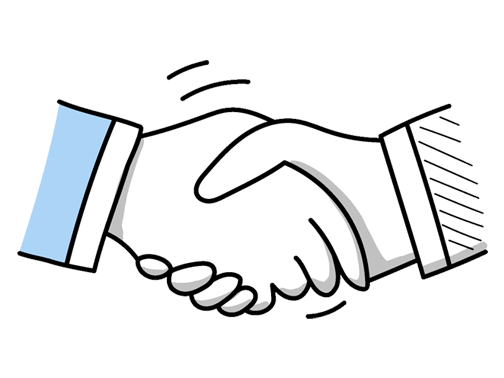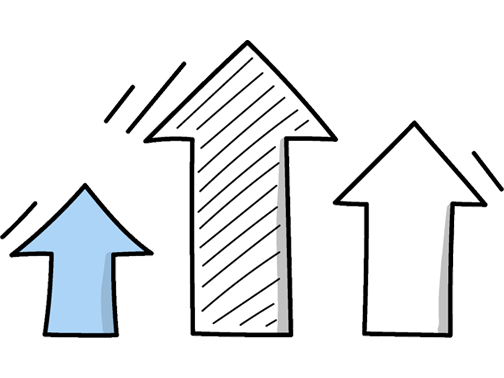Retail CEO Interview Questions (2025 Guide)
Find out common Retail CEO questions, how to answer, and tips for your next job interview
Practice Interviews Online - Identify your strengths and weakness in a realistic Retail CEO mock interview, under 10 minutes
Practice Now »Retail CEO Interview Questions
This question assesses your ability to pinpoint inefficiencies and lead impactful improvements that drive business success. You need to clearly describe the specific steps you took to improve operations, the measurable outcomes you achieved, and how you led or collaborated with others to make it happen.
Example: In my previous role, I led a cross-functional team to streamline inventory management by introducing a real-time tracking system. This reduced stock discrepancies by 25% and improved order fulfillment times significantly. By fostering open communication and empowering team members to suggest improvements, we created a more agile operation that responded quickly to demand changes, boosting both efficiency and customer satisfaction.
Interviewers ask this question to see how you apply data, collaboration, and technology to streamline operations and reduce costs. You need to explain how you use forecasting tools to predict demand, work closely with suppliers and teams to improve delivery, and adopt automation to track inventory efficiently.
Example: I focus on using real-time data to forecast demand accurately, which helps minimize overstock and shortages. Building strong partnerships with suppliers ensures flexibility and quick problem-solving, while close coordination with internal teams keeps everything aligned. Leveraging technology like inventory management systems has streamlined processes, cutting costs and improving turnaround times—like when we reduced stockouts by 20% through smarter ordering and better communication.
Interviewers ask this question to see if you can manage urgent operational demands without losing sight of the company’s future vision. You need to explain how you prioritize immediate tasks like sales targets while ensuring they support long-term brand growth, and how you communicate this balance clearly to your teams.
Example: In retail, it’s crucial to manage day-to-day priorities without losing sight of where the business is headed. I focus on urgent tasks that impact customer experience while ensuring they support our bigger vision. For example, if sales dip unexpectedly, I address that immediately but also use the insight to adjust our longer-term product strategy. Keeping teams aligned through clear communication helps us stay agile and focused at the same time.
Hiring managers ask this question to see how you maintain smooth, efficient operations and drive consistent results across multiple locations. You need to say that you implement standardized procedures like SOPs, monitor key performance indicators regularly to spot and fix issues, and encourage a culture where employees actively contribute to improving processes.
Example: To keep operations running smoothly, I focus on clear, consistent processes that everyone follows, which reduces errors and speeds things up. I also track key metrics closely to spot where we can do better and celebrate wins. Encouraging team feedback creates a mindset where everyone looks for ways to improve daily, like when we introduced a new stock-check routine that cut delays by 20%. It’s about teamwork and constant progress.
Hiring managers ask this question to understand how you lead and sustain a motivated, high-performing team that drives business success. You need to explain that you use initiatives to boost morale, provide professional growth opportunities, and foster trust through open communication to keep top talent engaged and committed.
Example: I focus on creating a workplace where people feel valued and empowered to grow. Encouraging open conversations helps build trust, so team members know their ideas matter. I also support continuous learning and recognize achievements, which keeps motivation high. For example, at my last role, introducing regular one-on-one check-ins boosted engagement and reduced turnover by making employees feel genuinely heard and supported.
Interviewers ask this to see how you translate vision into action and maintain alignment throughout the company. You need to explain that you use clear communication methods like town halls and newsletters, engage leaders and employees through workshops, and track progress with KPIs and feedback systems to ensure the strategy stays on course.
Example: To ensure our vision resonates company-wide, I focus on transparent communication and creating shared ownership. Regular leadership forums help align priorities, while town halls and team workshops engage employees directly. I also establish clear checkpoints to track progress and encourage feedback, allowing us to stay agile and adjust as needed. For example, at my last role, monthly strategy reviews kept everyone informed and motivated, driving consistent results.
What they want to understand is your ability to identify and nurture talent to ensure the company’s long-term success. You need to explain a specific example where you mentored or created programs that helped employees grow into leadership roles, showing your commitment to developing future leaders.
Example: In my previous role, I introduced a mentoring programme pairing senior leaders with high-potential employees. This hands-on approach helped them navigate challenges and build confidence. One participant progressed from store manager to regional lead within two years, proving the value of investing in people early. It’s about creating opportunities and trusting individuals to grow, which ultimately strengthens the entire organisation’s future.
This question assesses your ability to create a unified leadership vision that drives company success. You need to explain how you communicate clear expectations, foster open dialogue, and model the company’s values consistently.
Example: Ensuring alignment starts with clear communication of our vision and values, making them part of everyday discussions. I hold regular leadership meetings where we openly connect decisions to our goals, encouraging honest feedback. For example, when we launched a sustainability initiative, the team collaboratively shaped our approach, which strengthened commitment and accountability across departments. This shared ownership keeps everyone moving in the same direction.
Hiring managers ask this question to see if you understand how technology can drive customer satisfaction and business growth in retail. You need to explain how you use tools like AI for personalized experiences, loyalty apps to boost engagement, and data analytics to align tech with strategic goals.
Example: In retail today, technology is key to creating seamless, personalised experiences. Tools like AI-driven recommendations and mobile apps help customers find what they need quickly, boosting satisfaction. Beyond the front end, data analytics guides smarter inventory and service decisions, aligning tech investments with business goals. It’s about using innovation not just to sell products, but to build lasting relationships with customers.
This interview question helps assess your ability to use financial data to make informed decisions that drive a retail company's success. You need to explain how you analyze income statements and financial ratios like gross margin, relate these to operational efficiency, and connect metrics like inventory turnover to overall financial health.
Example: When evaluating a retail company's financial health, I start by reviewing the income statement, balance sheet, and cash flows to get a clear picture of profitability and liquidity. I pay close attention to ratios like inventory turnover and gross margin since they reveal operational strengths and potential issues. It’s also important to consider factors unique to retail, such as seasonal sales patterns or supply chain efficiency, to see how they impact overall performance.
Interviewers ask this to see if you can effectively monitor and improve store operations using data. You should explain how you set clear KPIs like sales per square foot, use dashboards to track daily performance, and apply insights to adjust staffing or inventory for continuous improvement.
Example: To measure operational performance, I focus on defining key indicators that truly reflect the business goals, like sales per square foot or inventory turnover. Regularly reviewing data ensures we spot trends early. We then use these insights to fine-tune processes—say, adjusting staff schedules during peak hours or streamlining supply chains—to keep improving efficiency and customer satisfaction over time.
Questions like this assess your awareness of the current retail landscape and your strategic thinking. You need to mention key challenges such as economic factors impacting consumer spending and shifts in UK consumer behavior post-Brexit, then explain how you would adapt by innovating customer experience or improving supply chains.
Example: The retail industry in the UK is navigating a complex landscape—shifting consumer habits, rising costs, and tighter regulations all play a part. To stay competitive, businesses must blend digital innovation with a personal touch, like offering seamless online and in-store experiences. Adapting quickly to policy changes and focusing on sustainability also resonates well with today’s customers, ensuring both compliance and long-term loyalty.
This interview question assesses your ability to implement lasting changes rather than quick fixes. You need to explain that you focus on embedding improvements into company culture and processes, while regularly monitoring performance and adapting as needed.
Example: Sustainable operational improvements come from embedding changes into the company culture and daily routines. I focus on clear communication, staff training, and setting measurable goals that everyone understands. For example, when we revamped inventory management, ongoing feedback loops and regular reviews helped maintain progress, not just initial gains. It’s about creating habits and accountability, so improvements naturally become part of how the business runs every day.
This question assesses your ability to manage financial discipline while supporting expansion, which is crucial for sustainable retail leadership. You need to explain how you monitor expenses and identify savings, and how you assess growth opportunities by weighing short-term costs against long-term benefits to make balanced, strategic decisions.
Example: Balancing cost control with growth means being disciplined about where every pound goes, while keeping an eye on the bigger picture. For example, I’d prioritize essential expenses and cut waste, but also allocate budget to innovative projects that show clear potential, like digital transformation or new product lines. It’s about making smart choices today that build the foundation for success tomorrow.
Questions like this assess your ability to stay ahead in a fast-evolving industry by continuously seeking out new information and applying it effectively. You need to explain how you regularly follow industry reports, news, and regulatory updates, then use those insights to innovate and improve the retail business.
Example: I regularly follow industry reports, attend key conferences, and engage with retail leaders to understand emerging trends. Keeping an eye on innovations both here in the UK and internationally helps me spot opportunities early. For example, adopting digital payment solutions after noticing their success abroad allowed us to enhance customer experience and stay competitive. Staying curious and connected ensures the business evolves with the market.
Employers ask this to see if you can recognize and respond to changing market conditions effectively. You need to explain how you analyzed the situation, adjusted your strategy accordingly, and share the positive results that followed to show your adaptability and leadership.
Example: In a previous role, when online shopping surged unexpectedly, we shifted focus from expanding physical stores to enhancing our e-commerce platform. After reviewing customer behaviour and investing in digital marketing, sales grew by 25% within six months. This pivot not only met changing demands but also positioned us strongly against competitors moving slower online. It reinforced the importance of staying agile in retail.
What they want to understand is how you manage change, motivate teams, and achieve results under pressure. You need to explain a specific example clearly, highlighting your leadership style, communication, and the successful impact of the change.
Example: In a previous role, I led a store network restructure to improve efficiency. I focused on clear communication and involved teams early to ease concerns. By aligning everyone with the vision and supporting them through the transition, we not only met our targets but also boosted staff morale. It was a reminder that change works best when people feel valued and part of the process.
This question assesses your ability to manage high-stakes disagreements and maintain a unified leadership team, critical for steering the company effectively. You need to describe how you actively listen to understand all viewpoints, mediate fairly to find common ground, and guide the team toward solutions that support the company’s objectives.
Example: When conflicts arise in the executive team, I focus on creating an open space where everyone feels heard. By encouraging honest dialogue, I can identify the root causes and work with the team to find solutions that everyone can support. For example, in a previous role, taking time to understand different viewpoints helped us turn a disagreement into a stronger, unified strategy. It’s about guiding the team towards collaboration, not confrontation.
What they want to understand is how you stay proactive and adaptable when financial conditions are uncertain. You need to explain that you analyze economic and consumer data to inform flexible budgets using scenario planning, while maintaining open communication with finance and department leaders to adjust plans collaboratively.
Example: In a volatile market, I focus on staying close to economic signals and industry trends to anticipate shifts. I build budgets that are adaptable, allowing us to pivot as needed without losing sight of our core goals. Engaging regularly with teams across departments ensures everyone is aligned and can respond quickly. For example, during recent supply chain disruptions, this approach helped us reallocate resources efficiently and maintain strong performance.
Interviewers ask this question to see how well you understand the changing retail landscape and whether you can lead the company through future challenges. You need to clearly describe innovative trends shaping retail and explain specific strategies you would use to keep the company competitive and growing.
Example: I see retail becoming more seamless and personalised, blending digital convenience with in-store experiences. To lead, we’ll invest in smart technology and deepen customer connections, like using data to tailor offers without losing the human touch. It’s about staying agile, embracing change, and fostering a culture where innovation drives growth—so our brand feels fresh, relevant, and truly valuable to customers now and in the future.
What they want to know is your ability to focus on key indicators that drive retail success and profitability. You need to mention metrics like sales growth, gross margin, inventory turnover, and same-store sales to show you understand both revenue and operational efficiency.
Example: When assessing a retail business, I focus on metrics like gross margin to understand profitability, inventory turnover to gauge how well stock is managed, and same-store sales for growth insight. Cash flow is crucial too, ensuring the business can meet obligations and invest wisely. For example, a strong inventory turnover paired with healthy margins often signals operational efficiency and customer demand alignment.
This interview question helps assess how you integrate innovation into your vision and decision-making to keep the company competitive and forward-thinking. You need to explain how you identify new trends and technologies, give examples of successful innovative projects, and describe how you balance creativity with practical risks in your strategic planning.
Example: Innovation is central to shaping our long-term vision. It’s about spotting new opportunities that set us apart while ensuring they fit realistically within our operations. For example, embracing digital tools has helped us enhance customer experience without disrupting our core service. Balancing fresh ideas with solid risk assessment ensures we stay ahead competitively without losing sight of what keeps the business running smoothly.
What they want to understand is how you adapt to change and lead effectively during challenges. You need to clearly describe the industry shift, the strategic actions you took, and the successful results that followed.
Example: Certainly. When online shopping surged, we embraced an omnichannel approach, blending digital and in-store experiences. We enhanced our website, introduced click-and-collect, and trained staff to support both channels seamlessly. This shift not only boosted sales but also strengthened customer loyalty by meeting shoppers wherever they preferred, turning a challenge into a sustainable growth opportunity.
What they want to understand is how well you grasp the key forces shaping retail’s future and your ability to lead through these changes. You need to mention emerging technologies like AI enhancing personalization, recognize consumer shifts toward sustainability, and explain how you’d adapt business models by blending online and offline experiences.
Example: In the next five years, I see technology like AI and augmented reality reshaping customer experiences, making shopping more personalized and engaging. At the same time, consumers are increasingly valuing sustainability and convenience, driving demand for ethical products and seamless online-offline integration. Adapting our business model to blend innovation with these shifting preferences will be key to staying relevant and competitive in the evolving retail landscape.
Questions like this assess your ability to navigate complex financial challenges under pressure, showing your strategic thinking and leadership. You need to clearly explain the situation, how you weighed options to make a tough decision, and the positive results or lessons that came from it.
Example: In a previous role, I faced declining sales during a key season and needed to cut costs without harming customer experience. After reviewing all departments, I chose to streamline inventory and renegotiate supplier contracts. This tough choice improved cash flow and maintained our service standards. It taught me the value of balancing financial discipline with customer focus to navigate challenging times effectively.
Ace your next Retail CEO interview with even more questions and answers
Common Interview Questions To Expect
The interviewer is looking to see how you found out about the job opening and what sources you use to stay informed about opportunities. Be honest and specific in your response.
Example: I actually came across this position on a job board website while I was actively looking for new opportunities in the retail industry. I also follow the company on social media, so when the job was posted, I saw it right away. I'm always keeping an eye out for exciting roles like this one.
The interviewer is looking for a candidate to demonstrate their qualifications, skills, experience, and passion for the role. Answers should highlight relevant achievements and how they align with the company's goals.
Example: You should hire me for this position because I have over 10 years of experience in the retail industry, including successfully leading teams and increasing sales. I am passionate about driving growth and innovation in the retail sector, and I believe my skills align perfectly with the goals of your company. I am confident that I can bring valuable insights and leadership to help take your business to the next level.
The interviewer is looking for you to highlight your key skills, experiences, and qualities that make you a strong candidate for the role. Be specific and provide examples to support your strengths.
Example: I would say my biggest strengths are my strong leadership skills, my ability to think strategically, and my excellent communication skills. For example, in my previous role as a Retail Manager, I successfully led a team of 50 employees and increased sales by 20% through strategic planning and effective communication with both staff and customers.
The interviewer is looking for how you handle criticism, your ability to reflect on feedback, and how you have used criticism to improve your work. You can answer by discussing a specific situation, your response, and the outcome.
Example: Sure! One time, a customer complained about the slow checkout process in our store. I took their feedback seriously and implemented a new system to speed up the process. As a result, customer satisfaction improved and we saw an increase in sales.
The interviewer is looking for a candidate who has done their research on the company, understands its values, products/services, and market position. Answers should demonstrate knowledge and enthusiasm for the company.
Example: I've done my homework on your company and I'm really impressed with your commitment to sustainability and community involvement. I also know that you offer a wide range of high-quality products that cater to diverse customer needs. Your company's strong market position and reputation for excellent customer service really stand out to me.
Company Research Tips
The company's website is a treasure trove of information. Look for details about the company's history, mission, vision, and values. Pay special attention to the 'About Us', 'Our Story', and 'Press Release' sections. These will give you insights into the company's culture, recent achievements, and future plans. Also, check out their product or service offerings to understand what they sell and who their target customers are.
Tip: Look for any unique selling propositions (USPs) or differentiators that set the company apart from its competitors. This will help you understand the company's competitive advantage.
Social media platforms like LinkedIn, Twitter, Facebook, and Instagram can provide valuable insights into the company's culture, customer engagement, and recent updates. LinkedIn can give you information about the company's size, location, and employee roles. Twitter and Facebook can show you how the company interacts with its customers and the general public. Instagram can give you a glimpse into the company's culture and values.
Tip: Pay attention to the tone of the company's posts and the types of content they share. This can give you an idea of their brand personality.
Understanding the company's competitors can give you insights into the industry and the company's position within it. Look for information about the competitors' products, services, and marketing strategies. This can help you understand the challenges the company is facing and how it differentiates itself from its competitors.
Tip: Use tools like Google Trends, SimilarWeb, or Alexa to get information about the competitors' web traffic and popular keywords.
Keeping up with industry news and trends can help you understand the market conditions and challenges the company is facing. Look for news articles, industry reports, and trend analyses related to the retail industry in the UK. This can give you an idea of the economic, social, and technological factors affecting the industry.
Tip: Use Google Alerts to stay updated with the latest news and trends related to the company and the industry.
What to wear to an Retail CEO interview
- Dark coloured business suit
- White or light coloured shirt
- Conservative tie
- Polished dress shoes
- Minimal and professional accessories
- Well-groomed hairstyle
- Clean, trimmed nails
- Light, professional makeup for women
- Subtle, pleasant fragrance





